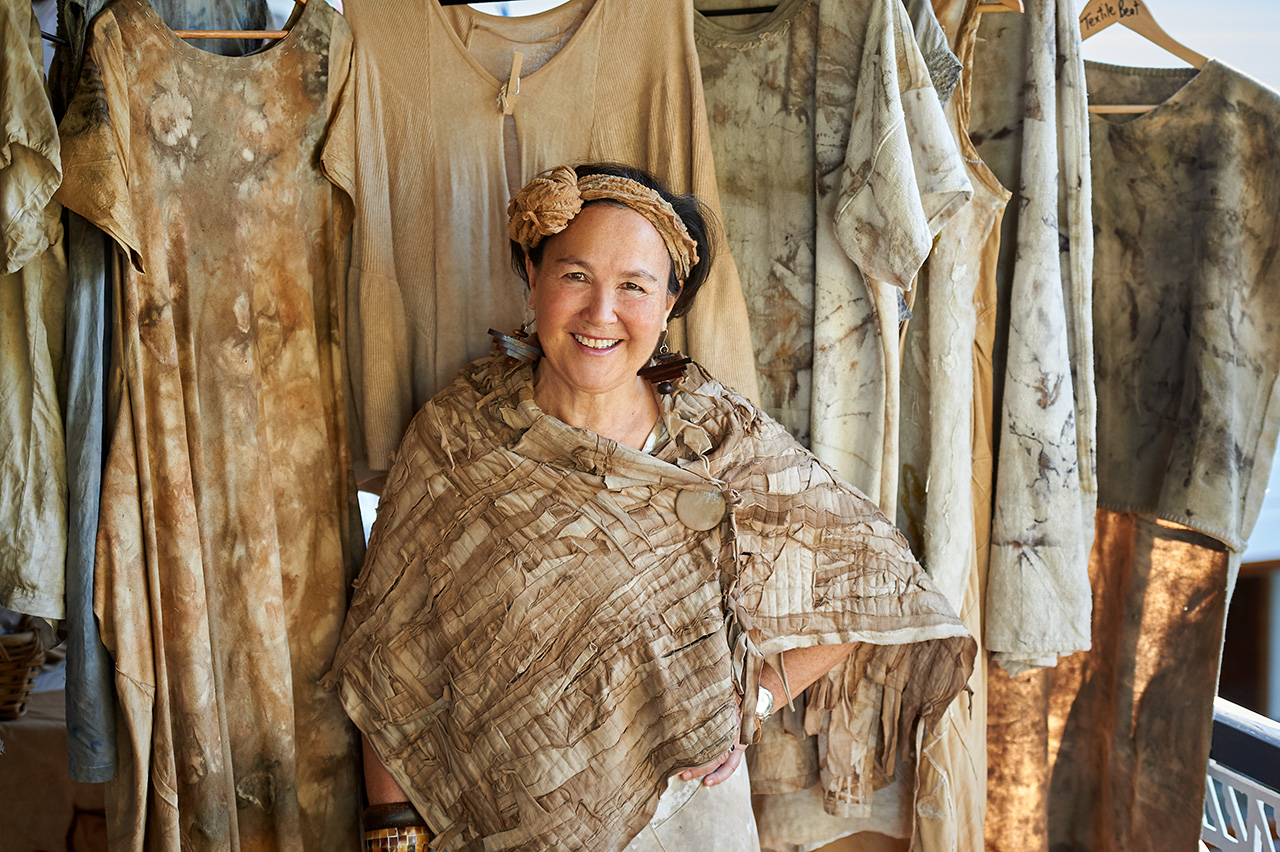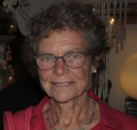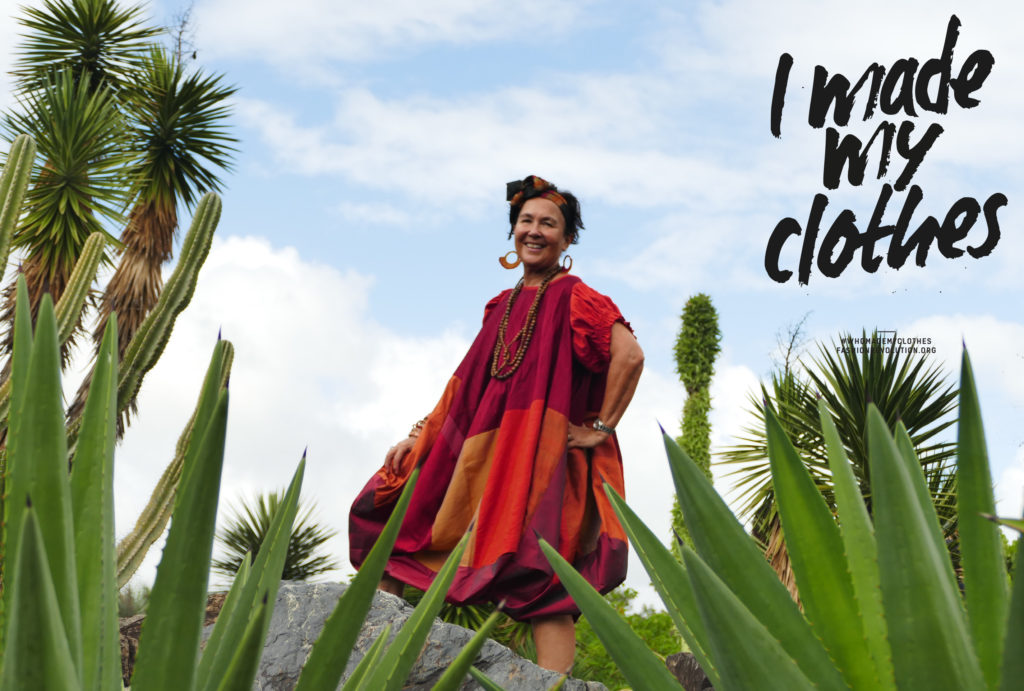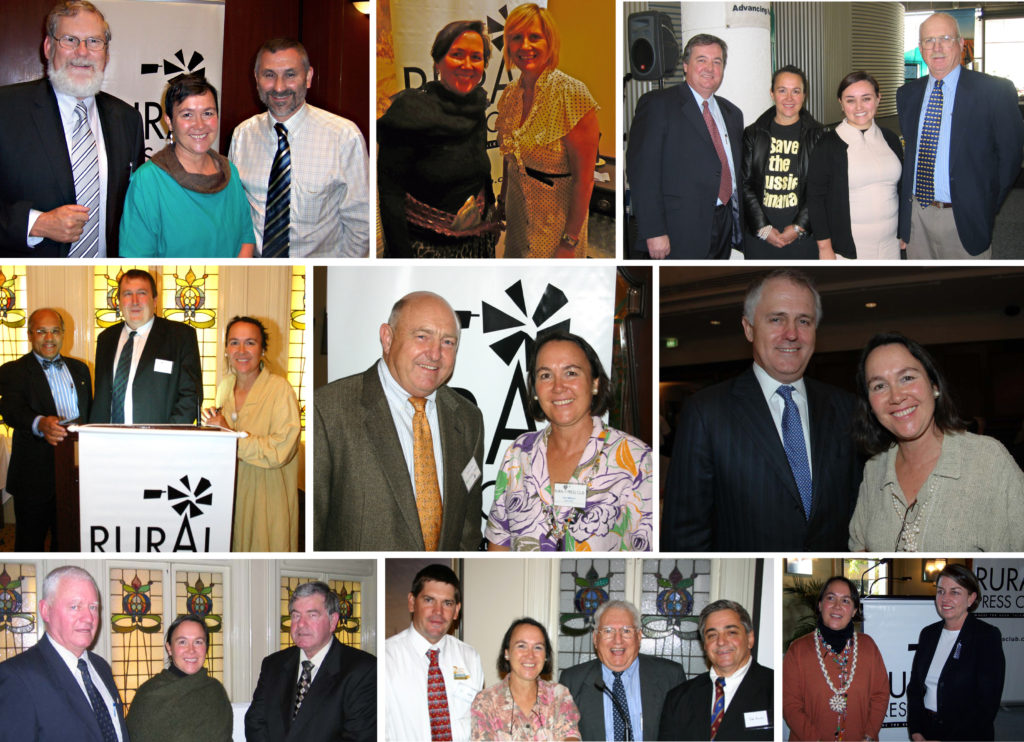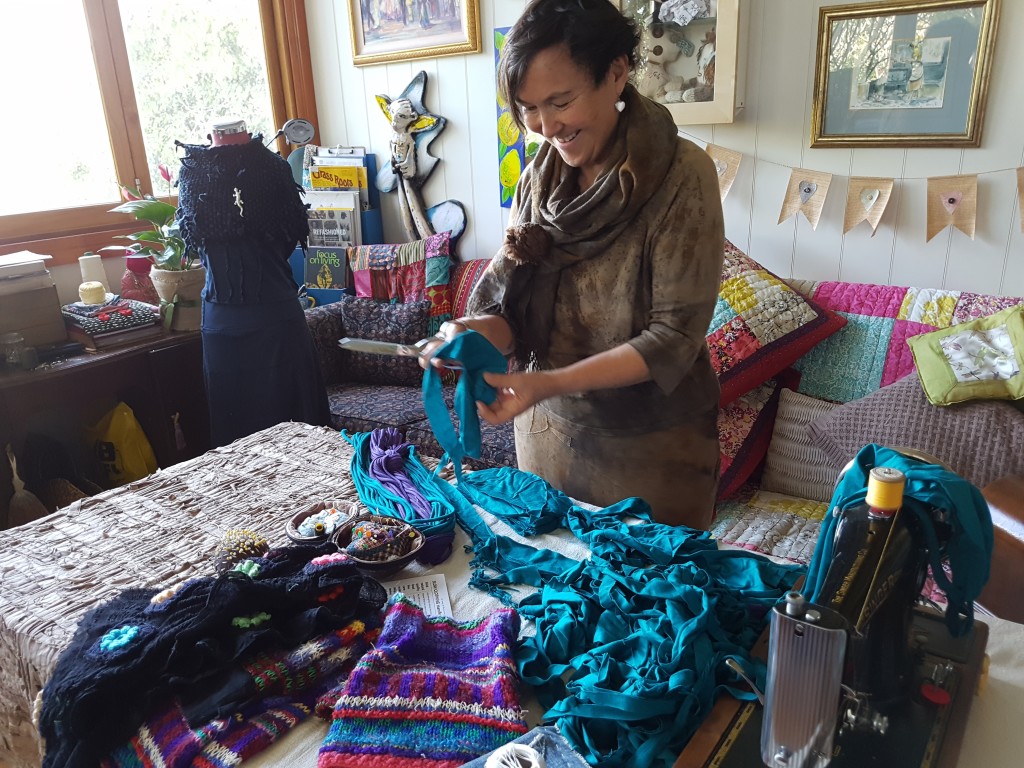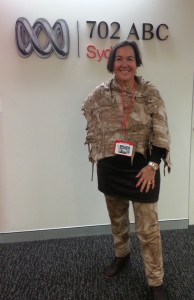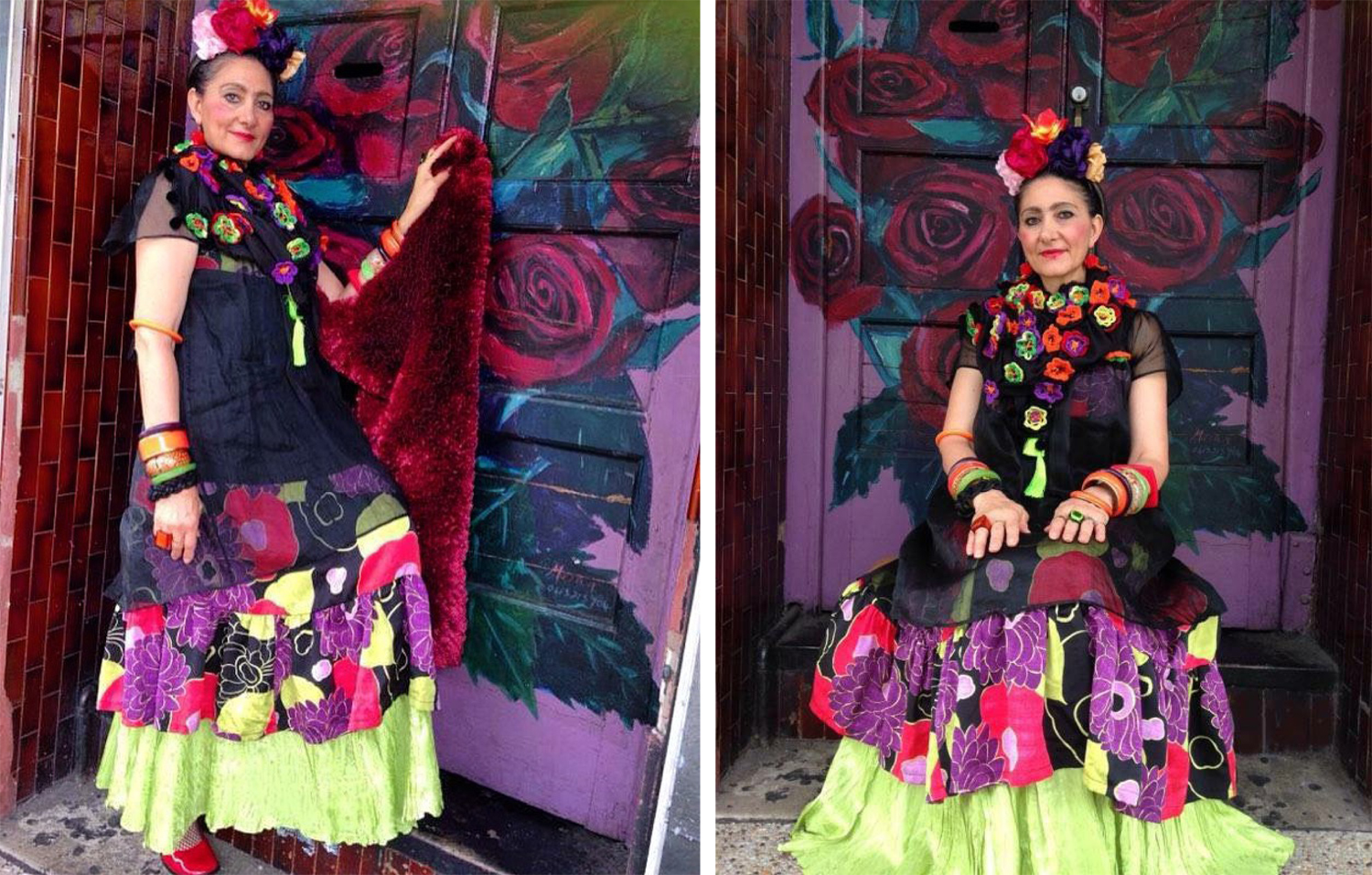Permaculture clothing is real; it is what I wear. All my wardrobe selections are natural fibres, made and mended, thrifted and repurposed, adapted to suit current needs. Produce no waste, slow and small solutions, creatively use and respond to change. Permaculture principles to live and dress by for a more permanent culture.
I was invited to present a session on Permaculture your Wardrobe at the 2021 Australasian Permaculture Convergence and delighted to have my work described there by permaculture leader Robin Clayfield as a ‘new edge’. Also delighted to recently chat with global permaculture ambassador Morag Gamble on her podcast Sense-making in a changing world.
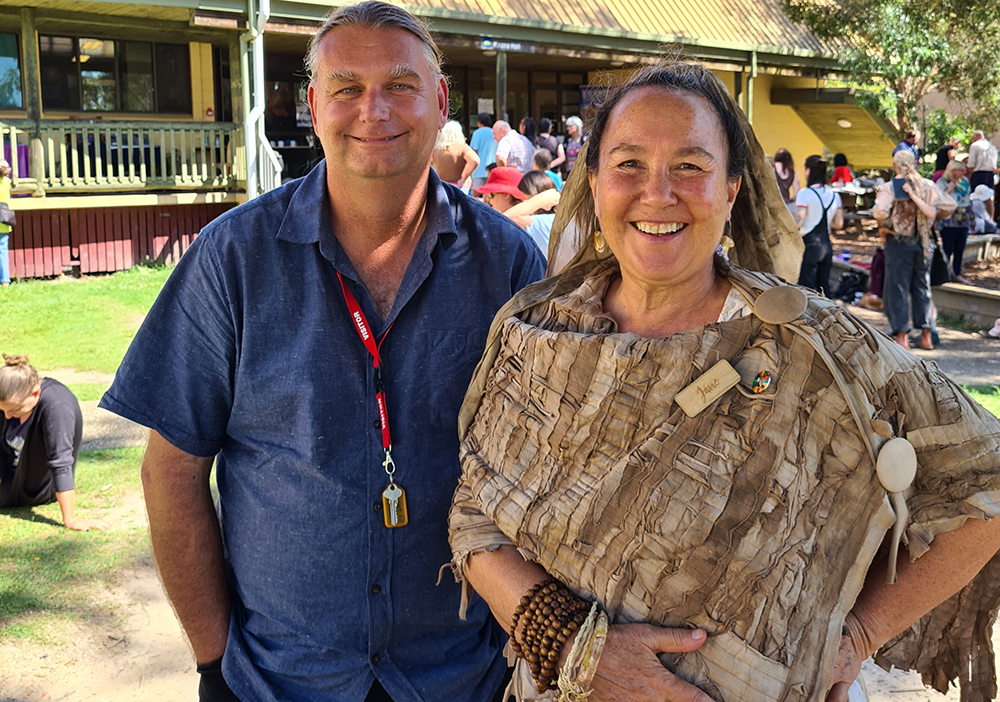
Michael Wardle of Savour Soils Permaculture and Jane Milburn at the 2021 Australasian Permaculture Convergence
Dressing is integral to life. Skin is our largest organ and we can think about clothes doing for us on the outside what food does inside. They protect and warm our bodies, and influence the way we feel and present to the world. And dressing is an agricultural act, if we want to wear natural fibres rather than plastic fibres.
